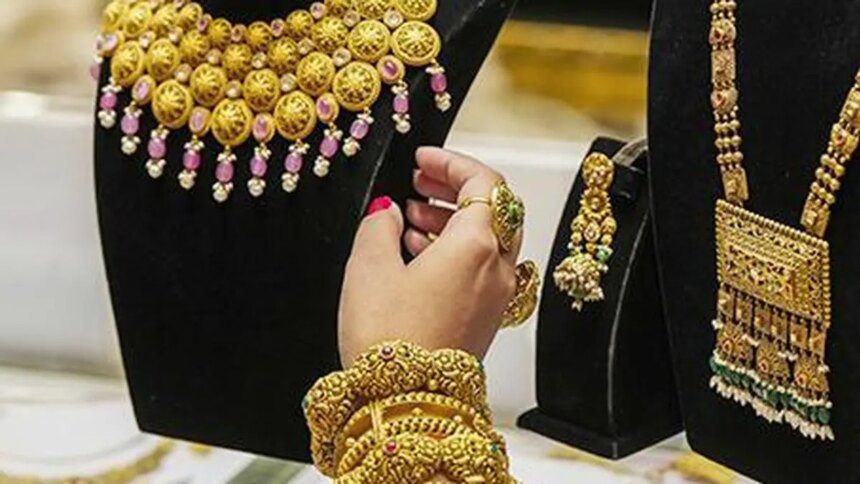India’s connection with jewellery has always been profound—an interplay of heritage, emotion, artistry and savings. Yet in recent years, this age-old industry has quietly entered a transformative phase. What was once confined to family jewellers and traditional showrooms is now being reshaped by technology, redefining how Indians discover, evaluate, and buy jewellery.
This evolution is not merely about convenience. It represents empowerment giving consumes the ability to explore, compare, and personalise jewellery that reflects who they are.
From touch to tech: The evolution of trust
In jewellery, trust is everything. For generations, that trust lived in the family jeweller’s handshake. Now, it resides in transparent digital certificates, hallmarking integration, AI-driven authentication, and verifiable sourcing data. These innovations have redefined trust for the digital age. What was once an abstract assurance is now a measurable, data-backed layer of credibility.
According to a recent FICCI–Deloitte report, 73 per cent of Indian consumers now begin their product discovery journey online even for tactile categories like jewellery, while 53 per cent still prefer closing purchases offline. This duality captures the current transition perfectly: discovery is going digital, and trust is going hybrid.
At present, online jewellery sales account for around 8–10 per cent of India’s market, while over 85 per cent of purchases still happen in stores. Although still small, online sales are growing rapidly and outpacing offline growth. The future is not a competition between channels but a convergence where consumers research and shortlist digitally, then validate or purchase through their preferred touchpoint.
The shift is accelerated by trust-building mechanisms such as BIS hallmarking, purchase protection, transparent exchange policies, and brand-backed authenticity. These have collectively demystified what was once considered an “offline-only” purchase, expanding Jewelry retail beyond metros into Tier-2 and Tier-3 cities.
Modern marketplaces are using technology not to replace tradition but to strengthen it. Their verification protocols, standardised certifications, and easy return guarantees replicate the reassurance of the trusted neighbourhood jeweller only now, consumers have access to hundreds of trusted brands and artisans at once.
By combining data and discovery, authenticity becomes scalable allowing every buyer to experience the confidence once reserved for generational relationships.
The rise of a new digital buyer
India’s jewellery market, valued at over $85 billion, is among the largest globally. While traditional retail still dominates, the online segment—currently just 8–10 per cent of total sales—is expanding at a much faster rate. By comparison, online penetration in the US and China stands at 14 per cent and 24 per cent, underscoring the immense untapped potential in India.
The next wave of growth is being fuelled by millennial and Gen Z consumers, who view jewellery not merely as an investment but as a form of self-expression. Their buying journey starts online—browsing designs on social media, checking certifications, comparing prices, and experimenting with virtual try-ons before even stepping into a store.
Technology has become the new jeweller’s lens, one that enables discovery, builds trust, and enhances confidence through immersive and transparent experiences.
Personalisation at scale
The defining force in this digital shift is personalisation. Consumers now expect the same level of curation in Jewelry that they already experience in fashion, music, or entertainment.
New-age marketplaces use AI-driven recommendation engines to analyse browsing behaviour, design preferences, and even life events, tailoring discovery to individual tastes. AR-powered virtual try-ons let customers visualise pieces that complement their skin tone, face shape, or outfit helping overcome a major barrier to online purchases.
Platforms integrating AR have reported 30–35 per cent higher conversion rates, proving that immersive visualisation builds confidence and intent. Predictive analytics can also anticipate gifting occasions or style shifts, turning a simple purchase into an experience of self-discovery.
The power of digital discovery
The modern jewellery shopper is spoilt for choice: thousands of Instagram boutiques, D2C labels, and WhatsApp catalogues compete for attention. Ironically, too much choice can feel like no choice at all.
That’s where tech-led curation is transforming the experience. Successful marketplaces are no longer just digital shelves; they are discovery engines. Using AI-driven personalisation, emotion-based filters (“minimal,” “bold,” “heritage,” “statement”), and interactive visuals, they help consumers browse the way they once strolled through a bazaar—guided by curiosity and intuition rather than algorithm fatigue.
Equally transformative is how these platforms democratise access. Regional artisans and independent designers, once limited by geography, now reach national and global audiences. This inclusivity is enriching India’s Jewelry ecosystem with diversity, innovation, and cultural storytelling.
The road ahead: Merging craft and code
With the online jewellery segment expected to grow at a CAGR of 24–28 per cent over the next three years, the trajectory is clear: the future is hybrid, merging design, trust, and digital intelligence.
Tech-led marketplaces are not competitors to traditional jewellers—they are collaborators in a connected era. They democratise access, elevate trust, and create visibility for both legacy brands and emerging designers.
For consumers, the advantage is choice without chaos. For creators, it’s reach without retail overhead. And for the industry, it’s transparency, scalability, and data-driven evolution.
India’s jewellery story has always shimmered with craftsmanship. Now, with technology as its new alloy, it gleams with possibility.
The author is Founder & CEO, Eternz
Published on November 15, 2025










